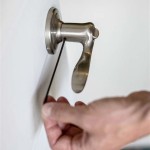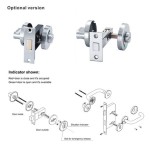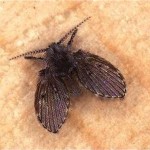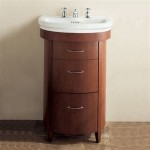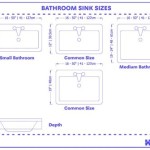How to Vent a Bathroom Exhaust Fan to the Outside Wall
Proper ventilation is crucial for maintaining a healthy and comfortable bathroom environment. An exhaust fan effectively removes moisture, odors, and pollutants, preventing mold growth, mildew, and unpleasant smells. Venting the bathroom exhaust fan to the outside wall ensures that these unwanted elements are expelled from your home rather than recirculated. This article will guide you through the process of properly venting a bathroom exhaust fan to the outside wall, covering essential steps and considerations to ensure optimal performance and safety.
1. Determine the Best Vent Location
Selecting the optimal location for the vent is the first step in ensuring efficient and effective ventilation. Consider the following factors:
- Accessibility to the exterior wall: Choose a spot that provides a direct route to the outside wall, minimizing the length of ductwork and potential for bends.
- Distance from nearby windows and doors: Ensure that the vent is positioned at a sufficient distance from windows and doors to prevent backdrafting.
- Roofline clearance: If venting through the roof, the vent should be at least 12 inches above the roofline to prevent water intrusion.
- Code compliance: Consult local building codes for specific regulations regarding vent location and installation requirements.
Once you have determined the best location, mark the spot on the exterior wall where the vent will be installed.
2. Install the Exhaust Fan and Ductwork
The next step is to install the exhaust fan and connect it to the ductwork. Follow these steps:
- Install the fan: Install the exhaust fan according to the manufacturer's instructions. Ensure that the fan is securely mounted and properly wired to the electrical system.
- Attach the ductwork: Connect the fan to the ductwork using appropriate connectors. Use rigid ductwork made of metal or PVC for optimal airflow and durability.
- Secure the ductwork: Secure the ductwork to the ceiling, walls, and roof using straps or clamps to prevent sagging and ensure proper airflow.
- Install a backdraft damper: Install a backdraft damper to prevent drafts from entering the bathroom through the vent when the fan is not running.
Ensure that the ductwork is smooth and free of any obstructions to facilitate efficient airflow. Install insulation on the ductwork to minimize heat loss and noise transmission.
3. Route Ductwork and Install Vent on the Outside Wall
After installing the fan and ductwork, route the ductwork to the exterior wall according to the planned location. Ensure that the ductwork is properly secured and sealed to prevent leaks and drafts.
On the outside wall, install a vent cover that is compatible with the ductwork. Follow these steps:
- Cut the vent hole: Cut the appropriate hole in the exterior wall using a saw or drill, ensuring that the hole is slightly larger than the vent cover.
- Install the vent cover: Secure the vent cover to the wall using screws or nails, ensuring a tight seal to prevent water ingress.
- Connect the ductwork to the vent cover: Connect the ductwork to the vent cover using appropriate connectors.
Consider using a vent flashing to seal the vent cover to the roof or wall, preventing water leaks and improving weather resistance.
4. Test and Adjust
After installing the vent, test the exhaust fan and ductwork to ensure proper operation and eliminate any leaks or obstructions. Follow these steps:
- Turn on the fan: Turn on the fan and observe its performance.
- Check for airflow: Hold a tissue paper or piece of lightweight material near the exhaust fan and vent cover. The airflow should be strong enough to deflect the material.
- Inspect for leaks: Look for leaks at the connections between the fan, ductwork, and vent cover. Check for any visible openings or cracks.
- Listen for noise: Listen for any unusual noises coming from the fan or ductwork.
Adjust the vent cover or ductwork as needed to optimize airflow and eliminate leaks. Ensure that the fan is working properly at the appropriate speed for effective ventilation.

Venting A Bath Fan In Cold Climate Fine Homebuilding

Bathroom Exhaust Fans Building America Solution Center

Bathroom Vent Piping To Near Exterior Inspecting Hvac Systems Internachi Forum

How To Vent A Bathroom With No Outside Access

Venting A Basement Bathroom Fan Outside

Air Sealing Bathroom And Kitchen Exhaust Fans Building America Solution Center

Quick Tip 23 Fixing A Drip At The Bathroom Fan Misterfix It Com

Can Bathroom Exhaust And Dryer Share Same Outside Duct Diy Home Improvement Forum

Bath Vent Duct Jwk Inspections

Bathroom Exhaust Fan Gfci Vent Protection Requirements Checkthishouse
Related Posts


